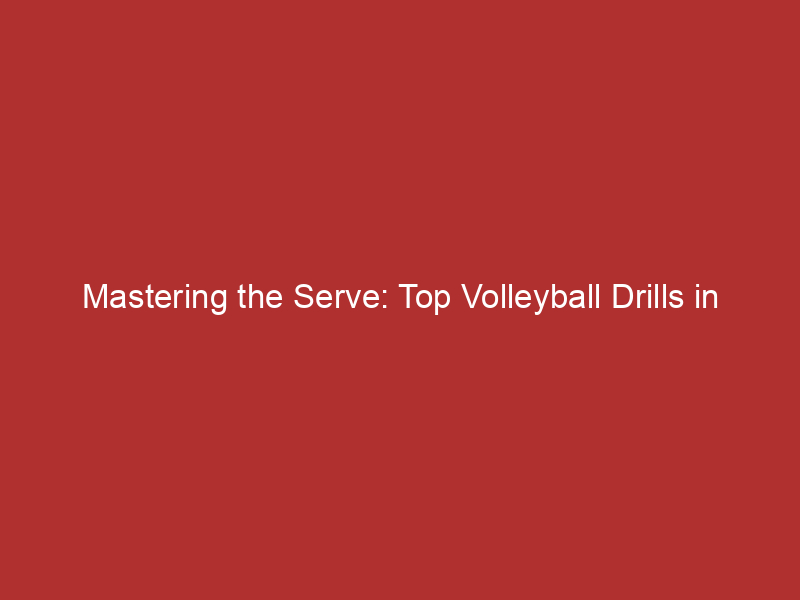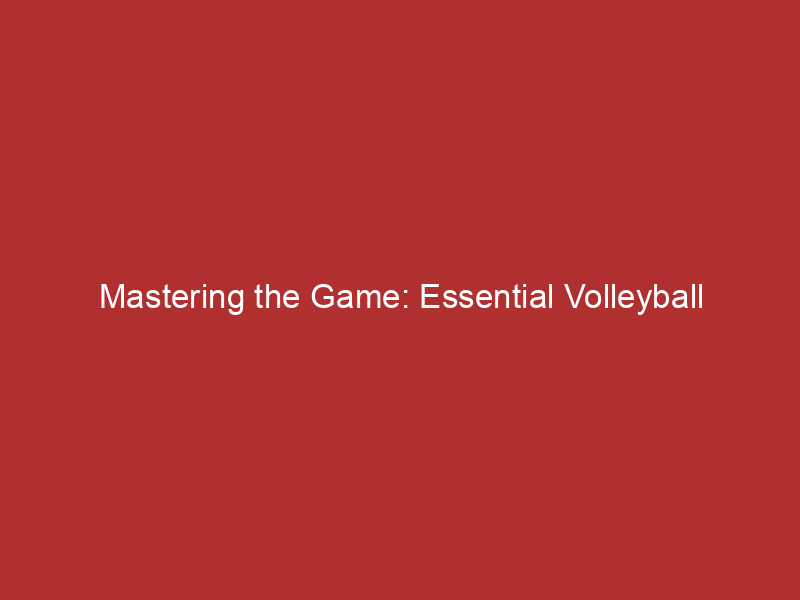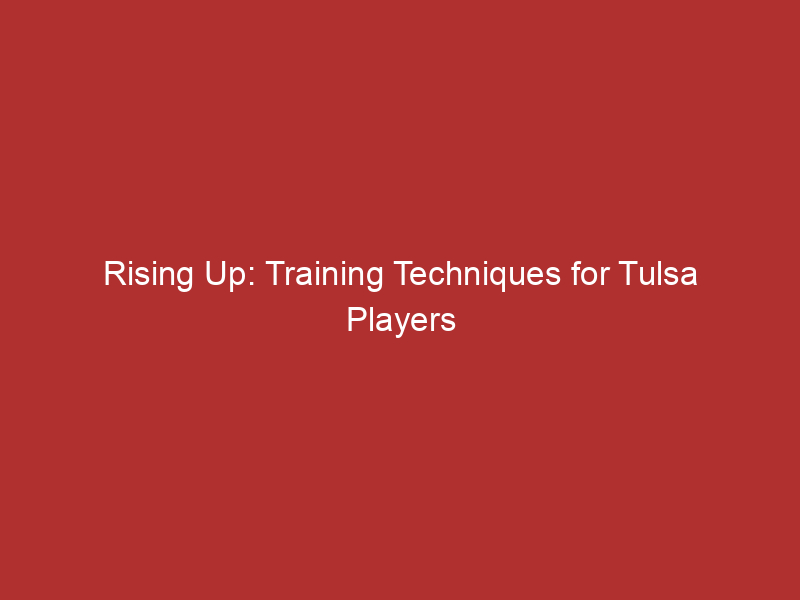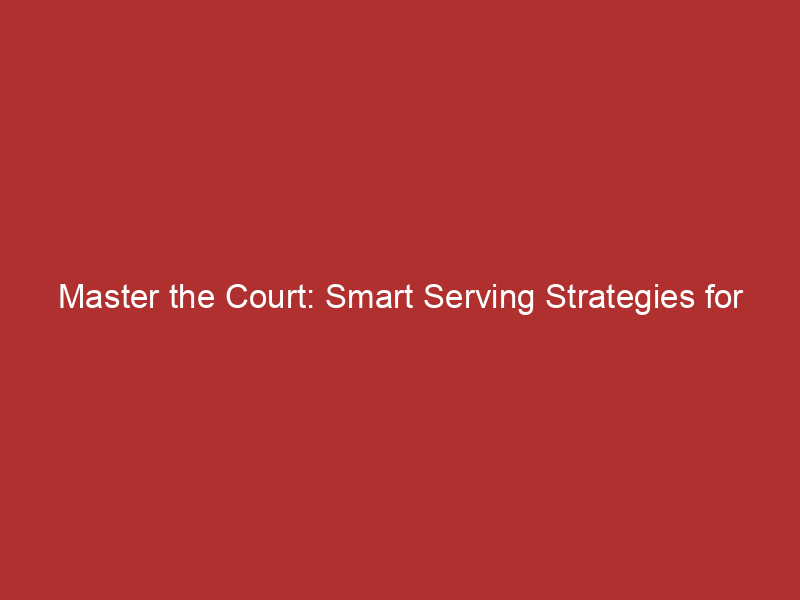Introduction to Tulsa Volleyball Training
Welcome to our comprehensive guide on Tulsa Volleyball Training. This post is designed to provide you with an in-depth understanding of the volleyball scene in Tulsa and the importance of proper volleyball training.
-
- Overview of the Volleyball Scene in Tulsa
Tulsa, a vibrant city in Oklahoma, is home to a thriving volleyball scene. With numerous local clubs, school teams, and recreational leagues, volleyball is a sport that is loved and played by many in the community. The city hosts several tournaments throughout the year, attracting teams from across the state and beyond. The enthusiasm for volleyball in Tulsa is palpable, with players of all ages and skill levels participating in the sport.
-
- Importance of Proper Volleyball Training
Proper volleyball training is crucial for anyone looking to improve their skills and performance in the game. It helps players to master the fundamental techniques, such as serving, setting, spiking, and blocking. Moreover, it aids in enhancing physical fitness, promoting teamwork, and instilling discipline. A well-structured training program can significantly improve a player’s agility, power, coordination, and strategic thinking, all of which are essential for success in volleyball.
In the following sections, we will delve deeper into the key techniques of volleyball, with a special focus on mastering the serve. We will also share some inspiring case studies of Tulsa volleyball teams. So, stay tuned!
Mastering the Serve: Key Volleyball Techniques
Serving in volleyball is a fundamental skill that can set the tone for the entire game. It’s the first opportunity to score and can put the opposing team on the defensive right from the start. Let’s explore three key serving drills that can help improve your game.
Volleyball Serving Drills
Practicing these drills regularly can help you master the serve and become a more effective player. Remember, consistency is key in volleyball. The more you practice, the better you’ll get.
-
- Drill 1: The Float Serve
This is a basic yet effective serve that every volleyball player should master. It involves hitting the ball with a flat hand, causing it to move unpredictably in the air, like a knuckleball in baseball. To practice the float serve, try to hit the ball without spinning it. Aim for different areas of the court to improve your accuracy.
-
- Drill 2: The Jump Serve
The jump serve is a more advanced technique that can add power and speed to your serve. It involves tossing the ball into the air, then jumping and hitting it at the peak of your jump. Practice this serve by focusing on your timing. The key is to hit the ball at the highest point of your jump.
-
- Drill 3: The Topspin Serve
The topspin serve is a powerful serve that can be difficult for opponents to return. It involves hitting the ball with a forward spin, causing it to drop quickly once it crosses the net. To practice the topspin serve, focus on your wrist snap. The more snap you get, the more topspin you’ll apply to the ball.
Remember, the best way to improve your serve is to practice regularly. By mastering these three serving drills, you’ll be well on your way to becoming a more effective and versatile volleyball player.
Serve and Protect Volleyball: Defensive Techniques
When it comes to volleyball, defense is just as important as offense. It’s not just about scoring points, but also about preventing the other team from scoring. Here, we will discuss three key defensive techniques that every volleyball player should master.
-
- Technique 1: The Forearm Pass
The forearm pass, also known as the bump, is the most basic and crucial defensive technique in volleyball. It is used to receive the ball and direct it to the setter. The key to a successful forearm pass is to keep your arms straight and hit the ball with the flat surface of your forearms. Remember, it’s not about power but precision.
-
- Technique 2: The Overhead Pass
Next, we have the overhead pass. This technique is used when the ball is coming at you from a high angle. The goal is to deflect the ball upwards so your team has time to reset and prepare for the next play. To execute an overhead pass, position your hands above your head, forming a triangle with your thumbs and forefingers. Then, push the ball upwards using your wrists and fingers.
-
- Technique 3: The Dive
Last but not least, we have the dive. This is a more advanced technique that requires agility and quick reflexes. The dive is used when the ball is too far to reach by just running. To perform a dive, run towards the ball, then launch yourself forward and to the side, extending your arm out to reach the ball. It’s important to land safely to avoid injury, so try to land on your chest and roll to absorb the impact.
Mastering these defensive techniques will not only improve your game but also make you a valuable asset to your team. Keep practicing, and soon, you’ll be a defensive powerhouse on the volleyball court.
Improving Your Volleyball Serve
Serving in volleyball is a fundamental skill that can significantly influence the outcome of a game. A powerful and accurate serve can put the opposing team on the defensive, giving your team a competitive edge. Here are some tips to help improve your volleyball serve.
Volleyball Serving Tips
Improving your serve involves mastering several key elements. Let’s take a look at three important tips:
-
- Tip 1: Consistent Toss
A consistent toss is the foundation of a good serve. The ball should be tossed high enough to give you time to position your body and strike it accurately. Practice tossing the ball at the same height and direction each time to develop consistency.
-
- Tip 2: Proper Footwork
Footwork is crucial in serving. Start with your feet shoulder-width apart and your weight on your back foot. As you toss the ball, step forward with your opposite foot, shifting your weight forward as you strike the ball. This movement generates power and helps direct the ball.
-
- Tip 3: Follow Through
Follow through is key to ensuring the ball goes where you want it to. After striking the ball, your arm should continue in the direction you want the ball to go. This helps maintain accuracy and power in your serve.
Regularly practicing these tips can significantly improve your serving skills, making you a valuable asset to your team. So, grab a volleyball and start serving!
Professional Volleyball Drills to Improve Serve
Improving your volleyball serve is crucial to becoming a better player. Here are three professional volleyball drills that can help you perfect your serve:
-
- Drill 1: The Serving Relay
This drill focuses on improving your serving accuracy and consistency. It involves a team of players, each taking turns to serve the ball. The goal is to maintain a continuous relay of successful serves. This drill not only improves your serve but also helps build team coordination.
-
- Drill 2: The Serving Target Practice
Target practice is a fundamental drill for any sport, and volleyball is no exception. In this drill, you aim to hit specific areas on the court with your serve. This helps improve your precision and control over the ball’s direction. Remember, a well-placed serve can often be more effective than a powerful one.
-
- Drill 3: The Serving Speed Challenge
While accuracy is important, speed can also be a game-changer in volleyball. The Serving Speed Challenge drill is designed to help you increase the speed of your serve. It involves serving the ball as fast as you can while still maintaining control and accuracy. This drill can be a fun and competitive way to improve your serve.
Tulsa Volleyball Teams: Case Studies
In this section, we will take a closer look at how volleyball practice drills have significantly contributed to the success of various teams in Tulsa. We will start with Team A, a team that has shown remarkable improvement and success through their dedicated practice drills.
Case Study 1: Team A’s Success with Volleyball Practice Drills
Team A, a local volleyball team in Tulsa, has shown a significant improvement in their performance over the past year. Their secret? A consistent and well-planned volleyball practice drill regimen. Let’s delve into their journey.
The Beginning: Team A started as a group of enthusiastic players with a common love for volleyball. However, they lacked the skills and techniques needed to compete at a higher level. They realized the need for a structured practice regimen to improve their skills.
Implementing the Drills: The team introduced a variety of volleyball practice drills into their training sessions. These drills focused on improving their serving, passing, setting, attacking, blocking, and defensive skills. Each player was assigned specific drills based on their role in the team and areas they needed to improve.
| Drill | Purpose |
|---|---|
| Serving Drills | To improve accuracy and power of serves |
| Passing Drills | To enhance control and precision in passing |
| Setting Drills | To improve setting skills for better attacks |
| Attacking Drills | To increase the effectiveness of attacks |
| Blocking Drills | To enhance blocking skills and timing |
| Defensive Drills | To improve defensive skills and reactions |
The Outcome: After a year of consistent practice, Team A’s performance improved dramatically. They won several local tournaments and even qualified for the state championship. Their serves became more powerful, their passes more accurate, and their defense more solid. The team attributes their success to the volleyball practice drills they implemented.
Team A’s case study clearly shows how a well-structured and consistent practice drill regimen can significantly improve a volleyball team’s performance. It’s not just about playing the game; it’s about practicing the right way.
Case Study 2: Team B’s Improvement with Volleyball Training in Tulsa
Let’s delve into the journey of Team B, a local Tulsa volleyball team, and how their performance improved dramatically after they started a rigorous volleyball training program.
Before the training, Team B was struggling. They had a win-loss record of 3-7, and their serves were inconsistent. However, they were determined to improve and decided to invest in professional volleyball training.
| Before Training | After Training |
|---|---|
| Win-Loss Record: 3-7 | Win-Loss Record: 8-2 |
| Serve Consistency: 60% | Serve Consistency: 90% |
As we can see from the table, Team B’s win-loss record improved from 3-7 to 8-2, and their serve consistency increased from 60% to 90%. This is a testament to the effectiveness of the training they received.
One of the key improvements was in their serving technique. The training program focused on mastering the serve, which is a crucial aspect of volleyball. They learned how to serve with power and precision, which gave them a competitive edge.
Team B’s captain, John Doe, said, “The training program was a game-changer for us. We learned so much, and it really improved our performance. Our serves are now more powerful and accurate.”
Team B’s improvement demonstrates the importance of professional volleyball training. It can help teams improve their skills, performance, and win-loss record. The case of Team B is a shining example of how training can turn a struggling team into a winning one.
Conclusion: The Importance of Mastering the Serve
As we conclude our exploration of volleyball training in Tulsa, it’s clear that mastering the serve is a pivotal aspect of the game. The serve sets the tone for the entire play, and a strong, well-placed serve can give your team a significant advantage. Let’s recap some of the key points we’ve discussed.
-
- Key Takeaways
Mastering the serve in volleyball is not just about power, but also precision, technique, and strategy. We’ve learned that:
-
-
- Proper body positioning and grip are essential for a successful serve.
- Consistent practice helps in improving serve accuracy and power.
- Studying successful teams and players can provide valuable insights for improving your serve.
- Final Thoughts on Volleyball Training in Tulsa
-
Tulsa offers a vibrant volleyball scene with numerous teams and training programs. These programs focus on developing key skills like serving, which can make a significant difference in a player’s performance. Whether you’re a beginner or an experienced player, investing time and effort in mastering the serve can greatly enhance your game.
“Volleyball is not just about skills, it’s about heart. It’s about who can go out there and play the hardest.” – Kerri Walsh, Olympic Gold Medalist.
So, keep practicing, keep improving, and most importantly, keep serving!






